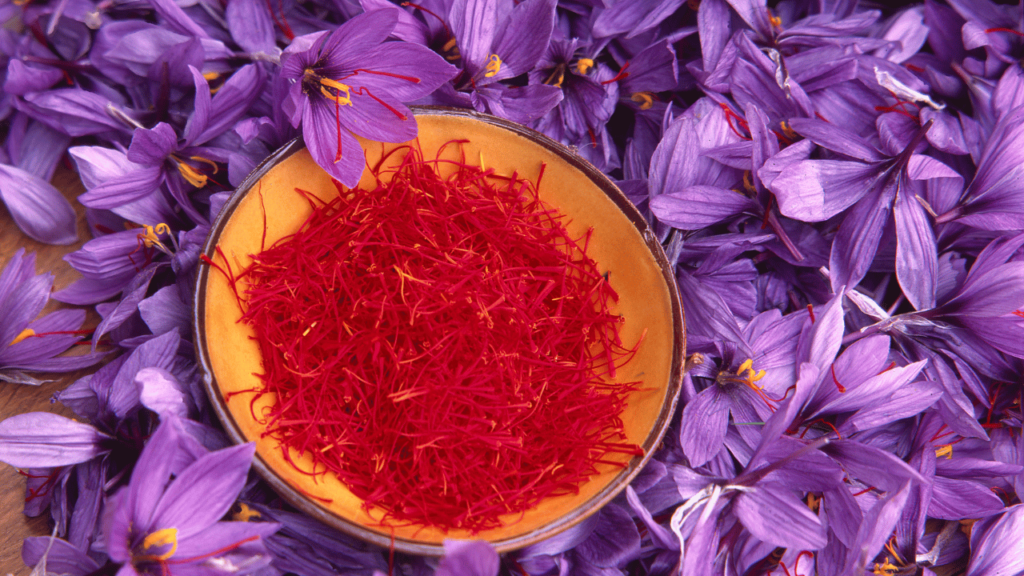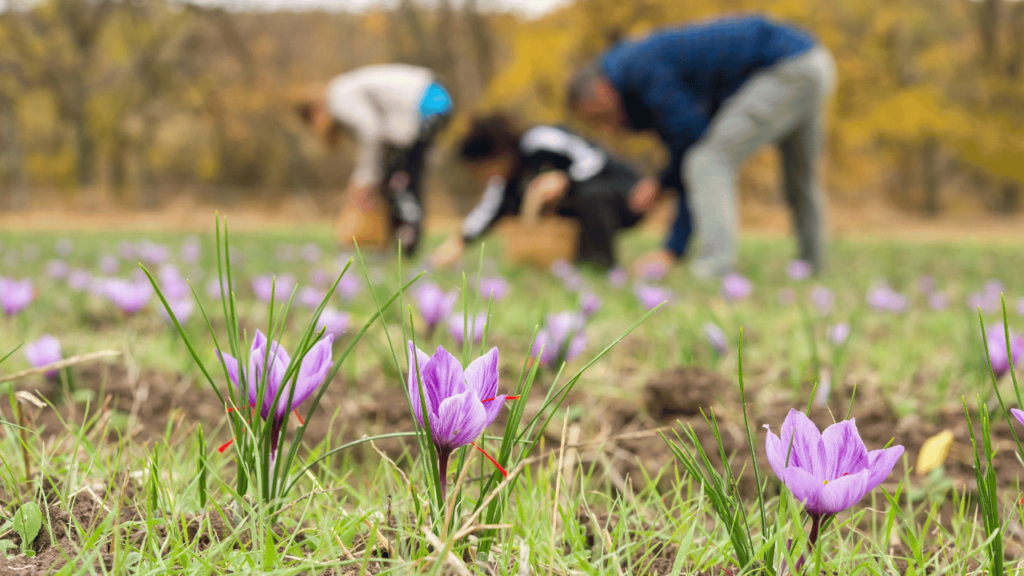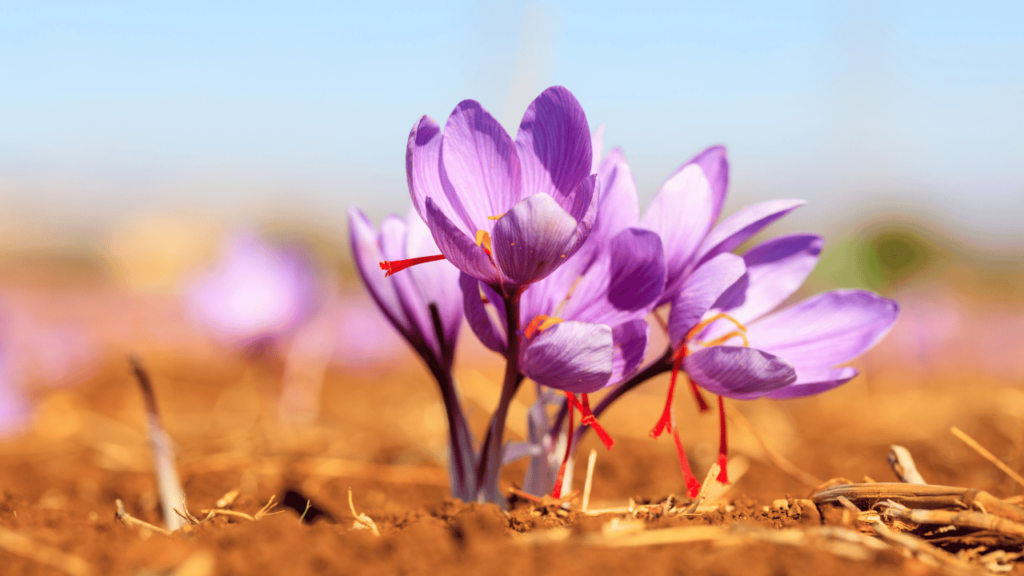Golden Goodness: Exploring the Delightful World of Saffron Spice
Saffron Spice
Golden Goodness: Exploring the Delightful World of Saffron Spice. Saffron, a valued spice obtained from the flower of Crocus sativus, also called the saffron crocus, is renowned for its unique flavor and vibrant red hue. Saffron is often used in cooking to add a unique and delicate taste to dishes.

It enjoys widespread popularity in cuisines from the Mediterranean, Middle Eastern, and Indian regions. Apart from its culinary uses, saffron is also valued for its medicinal properties and is believed to have antioxidant and anti-inflammatory effects.
Importance Of Saffron
Here are some key points highlighting the importance of saffron:
- Unique Flavor: Saffron adds a distinctive and delicate flavor to dishes, enhancing their taste and creating a memorable culinary experience.
- Vibrant Color: The vibrant red hue of saffron enhances the visual appeal of food, making it visually enticing and appetizing.
- Aromatic Properties: Saffron has a captivating aroma that can elevate the overall sensory experience of a dish.
- Culinary Significance: Saffron is a prized ingredient in various cuisines, including Mediterranean, Middle Eastern, and Indian, where it is used in a wide range of dishes, such as rice, stews, desserts, and beverages.
- Medicinal Benefits: Saffron has been used in traditional medicine for its potential antioxidant, anti-inflammatory, and mood-enhancing properties.
- Cultural and Historical Significance: Saffron has a rich cultural history and is often associated with special occasions and celebrations in many cultures.
Overall, saffron’s unique flavor, vibrant color, aromatic properties, culinary significance, medicinal benefits, and cultural importance make it a highly valued and important spice.
How does Saffron grow?
Saffron is derived from the saffron crocus flower, scientifically known as Crocus sativus. The process of saffron cultivation involves the following steps:
- Planting: Saffron crocus bulbs, also called corms, are planted in well-drained soil during the summer or early autumn. They prefer a sunny location.
- Growth: The saffron crocus plant grows leaves in the autumn, followed by beautiful purple flowers in the late autumn or early winter. Each flower has three vivid red stigmas, which are the saffron threads.


- Harvesting: Saffron threads are hand-picked from the flowers. This delicate process requires careful handling to ensure the quality of the saffron.
- Drying: Once harvested, the saffron threads are dried to preserve their flavor, aroma, and color. This can be done by gently toasting them or by air-drying them in a cool, dry place.
- Packaging: After drying, saffron is packaged and ready for use in various culinary and medicinal applications.
Cultivation Of Saffron
Here are more details about saffron harvesting in some of the major countries:
- Iran: Iran is the largest producer of saffron in the world. The country’s saffron, known as “Persian saffron,” is highly regarded for its exceptional quality and flavor. The region of Khorasan is particularly renowned for its saffron production.
- Spain: Spain is another significant producer of saffron. The region of La Mancha is particularly famous for its saffron cultivation. Spanish saffron is known for its vibrant red color and strong aroma.

- India: India has a long history of saffron cultivation, especially in the region of Kashmir. Indian saffron is known for its rich flavor and deep red color. It is often used in traditional Indian cuisine and Ayurvedic medicine.
- Afghanistan: Afghanistan is known for producing high-quality saffron. The country’s saffron is prized for its strong aroma and intense flavor. The region of Herat is renowned for its saffron cultivation.
- Greece: Greece has a long tradition of saffron cultivation, particularly in the region of Kozani. Greek saffron is highly regarded for its unique flavor profile and is used in various culinary dishes.
These countries have ideal climate conditions and expertise in saffron cultivation, making their saffron highly sought-after worldwide.
Uses Of Saffron
Saffron has a wide range of uses in culinary and medicinal applications. Here are a few common uses of saffron:
- Culinary Delight: Saffron is used to add a distinct flavor and vibrant color to various dishes, such as paella, risotto, biryani, and desserts like saffron-infused ice cream or cakes.
- Beverage Infusion: Saffron can be steeped in hot water or milk to create saffron tea or saffron-infused milk, which is enjoyed for its unique taste and potential health benefits.
- Aromatic Seasoning: Saffron is often used as a seasoning agent in soups, sauces, and marinades, adding a delightful aroma and enhancing the overall flavor profile.
- Traditional Medicine: Saffron has been used in traditional medicine for its potential antioxidant, anti-inflammatory, and mood-enhancing properties. It is believed to have various health benefits, although it’s important to consult a healthcare professional for any specific medical concerns.
- Herbal Remedies: Saffron is sometimes used in herbal remedies to alleviate symptoms of certain conditions, such as menstrual discomfort, insomnia, and depression. However, it’s important to consult a healthcare professional before using saffron for medicinal purposes.
- Fragrances and Cosmetics: Saffron’s aromatic properties make it a popular ingredient in perfumes, soaps, and cosmetics. It adds a unique scent and can enhance the overall sensory experience.
- Dyeing Agent: Saffron is known for its vibrant red color, which makes it a natural choice for dyeing fabrics and textiles. It has been used for centuries to create beautiful hues in clothing and tapestries.
- Traditional Rituals: Saffron holds cultural and religious significance in many traditions. It is often used in ceremonies, rituals, and festive occasions to symbolize purity, prosperity, and good luck.
Side Effects Of Saffron
Saffron is generally considered safe for most people when consumed in moderate amounts as a spice or flavoring agent. Nevertheless, certain individuals might encounter specific side effects. These can include:
- Allergic reactions: In rare cases, people may be allergic to saffron, which can cause symptoms like itching, rashes, or difficulty breathing. If you suspect an allergic reaction, it’s best to consult a healthcare professional.
- Gastrointestinal issues: Consuming large amounts of saffron may lead to digestive discomfort, such as nausea, vomiting, or diarrhea. It’s always a good idea to use saffron in moderation.
- Blood pressure effects: Saffron may have a slight impact on blood pressure. If you have low blood pressure or are taking medications that affect blood pressure, it’s advisable to consult with a healthcare provider before consuming saffron.
- Pregnancy concerns: Pregnant women should exercise caution with saffron consumption, as it may stimulate uterine contractions. It’s generally recommended to avoid high doses of saffron during pregnancy.
As with any dietary ingredient, it’s important to listen to your body and consume saffron in moderation. If you have any specific concerns or medical conditions, it’s best to consult with a healthcare professional for personalized advice.
Famous Dishes Of Saffron
Saffron, with its versatility, enhances a range of dishes with a distinctive flavor and lively hue. Here are a few popular saffron dishes:
- Paella: A traditional Spanish dish, paella is a saffron-infused rice dish cooked with a variety of ingredients such as seafood, chicken, and vegetables. The saffron gives the paella its distinct yellow color and adds a rich flavor.
- Risotto Milanese: This Italian dish features creamy risotto cooked with saffron, giving it a beautiful golden hue. The saffron adds a subtle floral flavor to the dish, complementing the creamy rice perfectly.

- Biryani: Biryani is a fragrant and flavorful rice dish popular in South Asian cuisine. Saffron is often used to add color and aroma to the rice layers in the biryani, creating a visually appealing and aromatic dish.
- Saffron-infused desserts: Saffron is also used in a variety of desserts. It can be added to rice pudding, ice cream, cakes, and even traditional Indian sweets like gulab jamun. The saffron imparts a unique taste and a beautiful golden color to these sweet treats.
These are just a few examples, but saffron can be used in a wide range of dishes, both savory and sweet. It’s a versatile spice that adds a touch of luxury to any culinary creation.